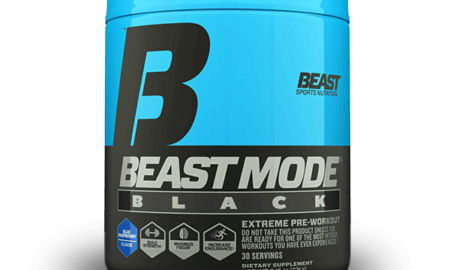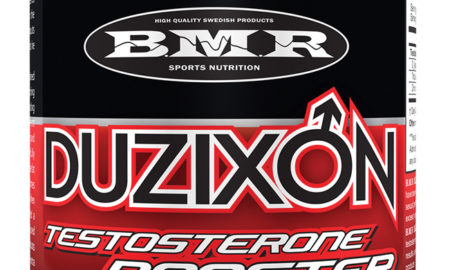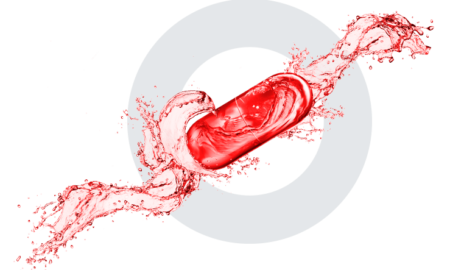An estimated 1 to 3 million Americans use various types of anabolic steroid drugs every year. Of those, most are not competitive athletes or bodybuilders but professionals in their 30s who use the drugs to produce effects that they’re unlikely to get through natural methods. Other users of steroids and other anabolic drugs, such as growth hormone, want an appearance that exceeds what they can get through training and good nutrition alone.
Some users have stated in various surveys that they want to be “cut but not big.” They also say that they have no desire to compete in bodybuilding contests—curious reasoning inasmuch as the primary purpose of using anabolic drugs would be to increase either athletic performance or muscle beyond what they could build naturally. If muscular definition is what you’re after, stringent dieting and training will get you the same results as drug use.
Most physicians are loath to prescribe any type of anabolic steroid drug, and many refuse to prescribe testosterone-replacement therapy even to men who are clinically deficient in the hormone. They fear bringing on prostate cancer because prostate tumors shrink when they’re treated with chemical castration techniques. That has led to the widespread—and mistaken—notion that testosterone itself is a carcinogen. If it were, every man with normal testosterone production would die of prostate cancer. In point of fact, the highest rates of prostate cancer, along with the most aggressive cases, occur in men whose blood testosterone counts are low.
The fact that so many physicians still subscribe to the testosterone-causes-prostate cancer myth, though, means that those who want to use anabolic steroids must get them from other sources. In many cases, that involves the purchase of drugs produced in so-called underground labs. Many contain compounds that are not supposed to be in them. Sometimes the labels don’t match the actual content, or there’s considerably less of the active substance than is listed on the label. The lack of quality control and lab standards often means that underground drugs contain impurities that could cause serious, even life-threatening health problems.
Underground drugs are often purchased at Internet sites. You usually can’t find a contact address or telephone number listed on the site, and you must pay cash. That, of course, sets you up to be ripped off. Suppose you send cash to a site like that and receive nothing in return: What are you going to do about it? You can’t appeal to government agencies, since you’re attempting to purchase prescription drugs minus the prescription. When you get ripped off, you’re simply out of luck. When those “labs” are arbitrarily closed down by one government agency or another, you get nothing but the wisdom never to purchase an online item without knowing precisely who’s selling what you’re buying.
For those who eschew drugs, there’s the supplement option. Since the first pro-hormone supplement, DHEA, hit the market, other pro-hormones have been introduced over the years. DHEA is a steroid hormone produced in the adrenal glands and is a precursor of other steroid hormones, such as testosterone and estrogen. It also has been touted as an agent for improving the body’s immune responses. As a pro-hormone supplement, DHEA is mildly effective for women but not for men. In young men it either takes a route to estrogen conversion or is converted to a metabolite of dihydrotestosterone, a.k.a. DHT, which is itself a metabolite of testosterone thought to be responsible for many of the side effects linked to testosterone, such as male-pattern baldness, prostate enlargement and acne. In women, DHEA does convert into testosterone, but the doses it takes to do that also boost the incidence of acne in women.
The first major pro-hormone supplement other than DHEA was androstenedione, an adrenal steroid. “Andro,” as it was called, was said to convert to testosterone more directly than DHEA—at least on paper. Its popularity peaked when in 1998 Major League Baseball slugger Mark McGwire was found to have used it during his quest to break the single-season home-run record Roger Maris set in 1961. McGwire eventually admitted what has long been suspected: He used a large array of anabolic steroids. McGwire’s brother, a competitive bodybuilder, had written a book in which he revealed that he helped Mark score various anabolic drugs.
Andro fell into disrepute when numerous published studies with young men as subjects showed that it tended to be converted more into estrogen than testosterone. So it was back to the drawing board for purveyors of pro-hormone supplements. Since many such entrepreneurs had a background in chemistry, they found a gold mine of information in an esoteric book about anabolic steroids written in 1968 by a chemist named Vida. The main feature of the book was that it extensively cataloged the thousands of anabolic steroid structures developed by drug companies in the early 1960s. Most of those drugs never made it to the market because they were either not better or far more toxic than existing steroids. Drug companies may not care much about protecting human health, but they are plenty concerned about litigation. That’s why so many of the steroids in Vida’s book never made it to the market.
That knowledge, however, wasn’t of concern to marketers who realized that many of the discarded formulas in Vida’s book did show some significant anabolic effects, and that in some cases, the effects exceeded those of prescription anabolic steroids. The last generation of pro-hormone supplements released prior to the 2004 amendment to the 1990 Anabolic Steroid Control Act, which made steroids a Schedule III drug, were all discarded old anabolic steroids. The 2004 amendment recognized many of them and specifically named them as being illegal by virtue of Schedule III in the 2004 amendment. Still, the door was open for the release of other esoteric steroids that weren’t on the government’s banned list.
That’s where we now stand. Many of the pro-hormone supplements sold today are discarded old steroids. There is little or no information about their possible long-term toxicity, as there was virtually no human or animal testing done during their development. Taking “supplements” like that makes the user an experiment of one, since the results are unpredictable. Eventually, government agencies, such as the FDA, become aware of outlaw supplements and quietly remove them from the market.
The 2004 steroid law amendment banned the future sales of any supplement that can be directly converted into testosterone, though in some cases not before some potentially serious side effects kicked in. One example was recently published as a case history involving a 31-year-old bodybuilder serving in the military.1 The man showed up at a military hospital complaining of acute weakness and fatigue. He was an atypical bodybuilder, in that for years he’d been smoking a pack of cigarettes a day and having four alcoholic drinks a night. Because his liver enzymes were high, the initial diagnosis was hepatitis, and he was prescribed N-acetylcysteine, vitamin B1, folic acid and a multivitamin. Upon questioning, he revealed that he’d been taking SUS500, a pro-hormone; a popular supplement containing the amino acid leucine and one of its keto metabolites; and creatine. One of his primary symptoms was extreme aggression and irritability, both of which began when he started using the SUS500 supplement. When he got off the SUS500, all symptoms, including the adverse personality changes and the liver problems, promptly disappeared.
Like most researchers, the authors of that case study at first tried to suggest that they didn’t know which of the three supplements had caused his medical problems. A search of the medical literature showed that neither the amino acid supplement nor the creatine could account for the patient’s symptoms. They found nothing about the ingredients in the SUS500 supplement, despite an exhaustive search of medical and chemical databases, the typical scenario for many of the ingredients in some current pro-hormone supplement formulas. One oversight: The researchers never measured the man’s testosterone to see if at least the SUS500 produced the desired rise, so we don’t even know if it worked as advertised.
Often overlooked about testosterone-boosting supplements is whether, even if they caused a minor rise in testosterone, it would be enough to generate any gains in mass. The few such products that have been studied yield little or no changes in body composition, including muscle. Some studies have reported a 42 percent rise in testosterone in human subjects due to a highly touted amino, D-aspartic acid. That pales in comparison to the results people get from using actual anabolic steroid drugs. So there is no evidence whatsoever that using a supplement such as D-aspartic acid will lead to muscle gains. Nor is there any long-term toxicity study on the substance that proves its safety.
Does that mean all T-boosting supplements are useless? Not at all. Normal levels of testosterone can take a nosedive during sleep deprivation or high-stress periods. Even overtraining can tip the scales toward higher cortisol counts at the expense of lowered testosterone. Then there is the decline that occurs in men over age 40. Most doctors won’t prescribe testosterone simply for the purpose of maintaining muscle and strength with age, but taking a supplement with a minor T-boosting effect may help. Even taking a drug that blocks the enzyme aromatase, which converts testosterone into estrogen, can raise lowered testosterone in men to normal values, and no direct testosterone or derivative, such as anabolic steroids, is required. So I don’t think it’s unreasonable to assume that an over-the-counter supplement capable of blocking aromatase or slightly boosting testosterone wouldn’t be effective for some men with diminished T counts.
What I would suggest, however, is avoiding pro-hormone supplements that don’t have any proof of effectiveness or safety. You can bet that many will still be released, though, since they’re cheap to manufacture but expensive to retail buyers. If you use them, however, you’re nothing more than a human guinea pig, with results that may prove disappointing or even threatening to your health. Be aware, too, of the placebo effect. The success reported for many of these supplements is due more to user expectations than to anything the supplement itself did.
1 Wingert, N., et al. (2010). Acute hepatitis and personality change in a 31-year-old man taking prohormone supplement SUS500. Psychosomatics. 51:340-44.
Editor’s note: Jerry Brainum has been an exercise and nutrition researcher and journalist for more than 25 years. He’s worked with pro bodybuilders as well as many Olympic and professional athletes. To get his new e-book, Natural Anabolics—Nutrients, Compounds and Supplements That Can Accelerate Muscle Growth Without Drugs, visit www.JerryBrainum.com. IM




















You must be logged in to post a comment Login